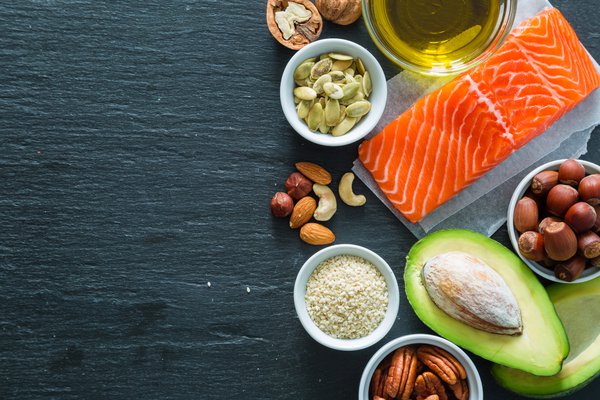You know how it is with kids – everything in life can be separated into two simple categories: right and wrong, truth or lie, good versus bad. Viewing the world in such simple terms can be tempting, especially when you’re looking for a definitive answer. Unfortunately, as we all know, life just isn’t so clear-cut, and the same is true when it comes to the narrative surrounding dietary fat.
What’s the skinny now on fat?
During the fat-phobic ’90s, all fats were lumped together indiscriminately into the “bad” category. “Low-fat” was the food advertiser’s adjective of choice, and for those of us trying to be healthy, our mission was simple and clear: Avoid all fats as much as possible.
- MORE ON HEALTH & WELLNESS:
- Seven ‘superfoods’ to add to your diet
- Tips for good liver health
- Here’s what happens when someone goes into a coma
But the thing about knowledge is it’s a work in progress, and dietitians, doctors and other health-minded professionals have continued to learn more about how our bodies work. And the story of fats? It’s evolving, too, with experts disagreeing about the best choices for the health-conscious populace. Don’t worry about dietary fat as long as it’s unsaturated…saturated fat is fine…moderate your intake.
So, if the experts can’t agree on the truth of the matter, we’re out of luck, right? Well, yes and no.
Three big fat truths experts agree on
In spite of the debate, there are three things the experts do agree on:
- Fat is a nutrient, and we need some in our diet. Besides being an energy source, our bodies also need fat to absorb certain essential vitamins and minerals. We need fat to control inflammation and for blood to clot and to build cell walls and the coverings surrounding nerves.
- Unsaturated fats are the best choice. These are the “good fats,” thus called because they increase the amount of HDLs in your blood (and HDLs help your body to eliminate cholesterol from the blood). These good fats are found in nuts, seeds, oily fish, avocados and olives. Peanut, sunflower, safflower, canola and olive oils also fall into the good fats category.
- Trans-fats are the true baddies. Also called “partially hydrogenated vegetable oils,” these fats are manufactured through an industrial process that makes healthy vegetable oil less likely to go rancid. In this transformed state, these fats increase LDLs (which deposit blood cholesterol along artery walls, increasing the risk of heart disease and other health problems). They also lower HDLs.
How’s this for a surprise: Moderation (and nut cheese)
So, if these are the only three things we can count on and the best dietary choices are up for debate, what’s a gal to do? Just like everyone else out there (experts included), I don’t have all the answers. And I can’t tell you what’s right for you. But I’ll share with you what works for me and for my family. We lean toward plant-based, whole foods. We trust cows over chemists (read: butter over margarine). We don’t worry overly much about the amount of fat in our diet if it’s the good kind.
Summed up another way:
• Bagel with cream cheese? Yes, please, but just a thin schmear.
• Nonfat cream cheese? Thanks, but no thanks: That stuff is disgusting.
• Cultured, vegan cream cheese alternative made from soaked and pureed cashews (high in heart-healthy unsaturated fat)? Yup. I’ll give it a try.
What are you doing to make sense of the fats debate?
Note: Learn more about the cultured cashew cream cheese alternative. Seriously, it’s yum. A million times better than the dry, bouncy nonfat cream cheese we’ve all tried and hated. All it takes is water, raw cashews, non-dairy yogurt and salt.
About Kathy Izumi
I’m Kathy. I love pen and paper, glue and glitter, trees and tents, chopping, mincing, stirring, kneading. I run a little, swim a little and curse a little (especially when I’m too ambitious about the other two). I have one husband, two young kids and, until quite recently, two Madagascar hissing cockroaches in an aquarium in the living room. I’ve lived here and there across the U.S. and the world and am happiest huddled in a corner of the couch reading mystery novels.
This content is part of the “Road to Wellness” series originally published on IBX Insights.



